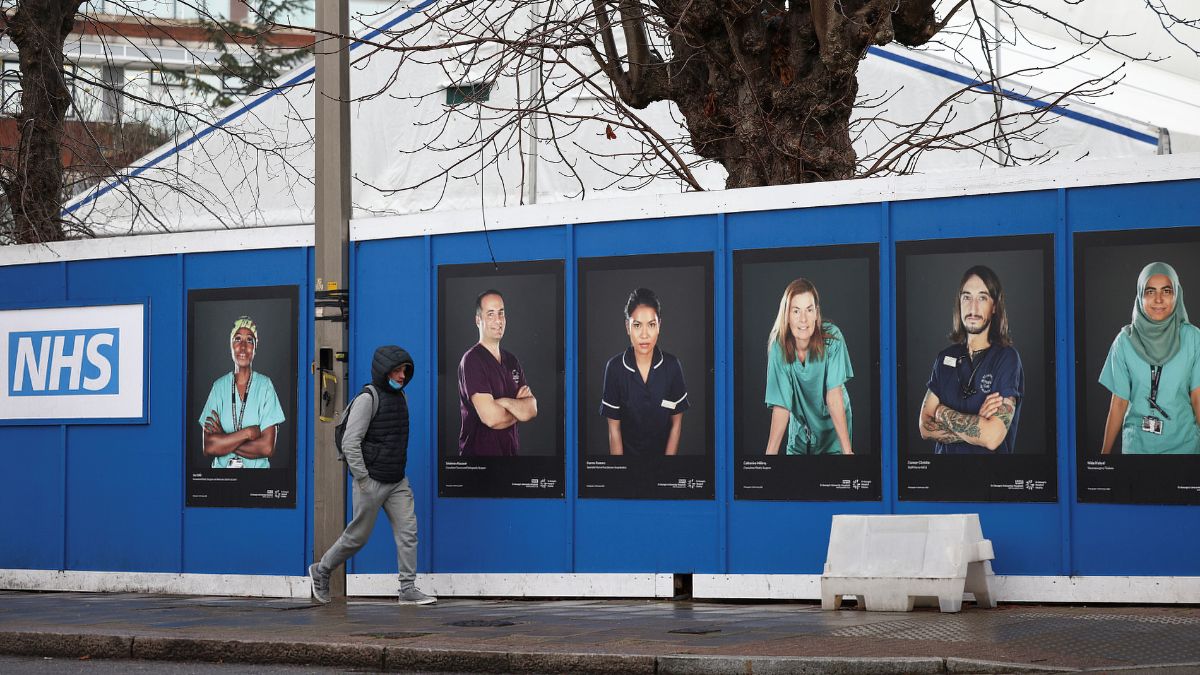United Kingdom’s National Health Service (NHS) is confronting a rapid rise in the number of internationally trained doctors leaving the country.
Recent figures show that the departure of foreign-trained doctors has reached levels not seen in years, raising alarms about the sustainability of a service already grappling with workforce shortages.
Newly released data from the General Medical Council (GMC) indicates a sharp rise in the number of doctors with qualifications from outside the UK exiting the medical workforce.
The numbers behind the doc exodus in the NHS
According to the regulator, 4,880 doctors trained abroad left the UK in 2024, compared with 3,869 the year before — an increase of 26 per cent. This number is also the highest recorded in the past decade.
The NHS’s reliance on staff recruited from overseas is substantial; around 42 per cent of all doctors practising in the UK have medical degrees from foreign institutions.
This dependence has long been viewed as a central pillar of the health service’s functioning, especially in specialities where domestic training numbers have not kept pace with demand.
GMC chief executive Charlie Massey warned that the NHS must prepare for deeper structural risks if retention continues to deteriorate.
He cautioned, “Doctors represent a mobile workforce, whose skills are in high demand around the world. Internationally qualified doctors who have historically chosen to work in the UK could quite conceivably choose to leave if they feel they have no future job progression here, or if the country feels less welcoming.”
“Any hardening of rhetoric and falling away of support could undermine the UK’s image as somewhere the brightest and the best from all over the world want to work. It is vital that workforce policies do not inadvertently demoralise or drive out the talent on which our health services depend… If we see even a small percentage increase in them leaving, our health services will end up with huge holes that they’ll struggle to fill.”
The rise in departures has come alongside a slowdown in new arrivals. A total of 20,060 overseas-trained doctors joined the UK medical register in 2024, marginally higher than the 19,629 who did so in 2023, marking the smallest increase since 2020.
This levelling-off in incoming numbers, at a time when outgoing numbers are growing, has contributed to mounting fears that
a longstanding pipeline of migrant doctors may begin to shrink.
Why overseas doctors are leaving the NHS
While the motivations behind the recent wave of departures vary, health leaders say changing attitudes toward migrants and rising instances of discrimination are playing a significant role.
Reports from doctors, hospital trusts and representative associations suggest that many non-UK clinicians are questioning whether they feel safe, respected or valued.
NHS Providers, which represents trusts across the country, has heard repeatedly from senior managers that discrimination and hostility from parts of the public are increasing.
Some chief executives have reported that NHS staff feel uneasy entering certain areas where St George’s flags are heavily displayed, with workers describing them as creating “no-go zones.”
Staff visiting homes to provide community treatment have expressed feeling intimidated by these displays, particularly when combined with previous instances of verbal hostility.
A poll by NHS Providers found that 45 per cent of senior managers were “extremely concerned” about discrimination faced by clinical staff. Another 33 per cent expressed moderate concern, reflecting a widespread belief among trust leaders that conditions have worsened.
UK Health Secretary Wes Streeting recently signalled his own concern about rising racial hostility, saying that the climate resembled earlier decades when marginalised groups faced widespread abuse.
The Royal College of Nursing has similarly highlighted a surge in racist abuse directed at staff.
How career obstacles in the UK are pushing docs to move abroad
One of the most significant challenges is the difficulty new arrivals face in securing training positions or substantive posts soon after registration.
The GMC found that in 2024 only one in eight newly registered international doctors secured a designated NHS post within six months, a substantial drop from earlier years.
By contrast, one in five found such positions within that timeframe in 2023, and one in four did so in 2022.
This dramatic decline has caused concern among both regulators and workforce planners, particularly as early employment opportunities are crucial for progression.
As competition has increased, pressure on training places has become a decisive factor. Around 30,000 doctors applied for 10,000 training places, with international medical graduates making up roughly two-thirds of that applicant pool.
Streeting has committed to reviewing this structure, saying, “One of the things that I’m doing is putting an end to the absurdity where homegrown talent are having to compete for the same training places on equal terms against people who’ve trained overseas. I think it’s crackers. I think it’s unfair to our own doctors. I also think it doesn’t help this country with unmanageable levels of net migration.”
He added that he was exploring whether legal changes could be made sooner than expected.
Although the government has argued that prioritising UK-trained doctors will help reduce migration pressures and support domestic graduates, the GMC has warned that heavily restricting opportunities for internationally trained doctors could undermine recruitment efforts and deter clinicians from relocating to the UK at a time when they are urgently needed.
How burnout has contributed to the exodus
Years of high demand, unresolved pay disputes and rising stress levels have contributed to a sense of fatigue across the medical workforce.
In the summer of 2024,
resident doctors — previously referred to as junior doctors — undertook a five-day strike as part of a broader dispute with the government over pay, conditions and career progression.
This came during a period when many clinicians already described feeling overwhelmed by increasing caseloads, rota gaps and difficulty maintaining safe levels of care.
A GMC survey in August 2025 revealed that 20 per cent of doctors were considering leaving the profession in the UK, while one in eight were contemplating working abroad.
Some of those leaving are among the most senior, with a quarter of the departing doctors aged 40 or older, representing a significant loss of institutional memory and mentoring capacity.
Where UK docs are headed
The GMC’s data also shows where departing doctors are choosing to continue their careers. Australia remains the most common destination for UK-trained doctors, with Canada and Ireland also seeing notable numbers of arrivals from Britain.
These countries offer more competitive pay packages, better staffing ratios, clearer pathways for career advancement and less intense workloads — all strong draws for clinicians already worn down by challenging conditions at home.
This move abroad has become sufficiently common that some NHS trusts have begun acknowledging it openly in workforce planning discussions.
Health leaders warn that replacing these losses is extremely difficult, particularly when the same nations attracting UK doctors also recruit from similar talent pools.
How this is affecting the UK taxpayer
The increasing number of clinicians leaving soon after completing their UK-based training represents a significant financial cost to the public purse.
Estimates from the University of Kent suggest that training a consultant doctor costs around £420,533. If more than 4,000 doctors leave in a year, the combined value of their publicly funded training could reach roughly £1.7 billion.
Although health service employers have insisted that the proportion of doctors who move overseas has not changed significantly in a decade — remaining at approximately 1 per cent of the total workforce — the growing size of the workforce means the absolute number of those leaving is rising steadily.
As part of a broader 10-year health workforce plan, the government has committed to reducing the proportion of doctors hired from outside the UK from 34 per cent to 10 per cent, while also increasing places for domestic medical students and speciality trainees.
Streeting has described the NHS as “broken,” outlining intentions to expand general practice and specialist training places by 1,000 slots over three years.
With inputs from agencies
End of Article


)
